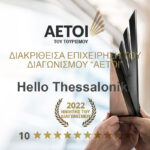
Venetikos River and Bridge at Grevena, Northern Greece
The Venetikos Bridge is a stone arch bridge that dates back to the Ottoman period.
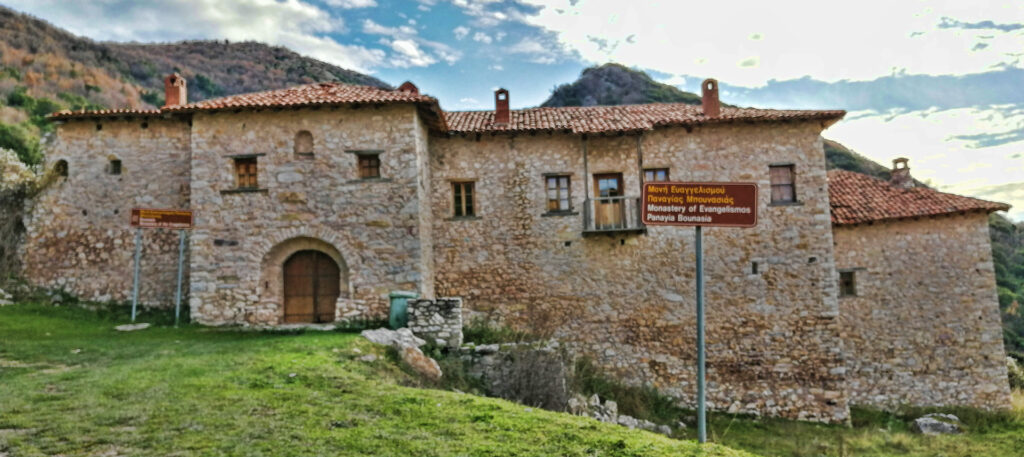
Evangelismos Monastery of Panagia Bounasia, Paliouria, Grevena
Forty-six kilometers southeast of the city of Grevena, at the roots of the Kamvouni mountains, is the village of Paliouria, known to the ancients as Zmiatsi.
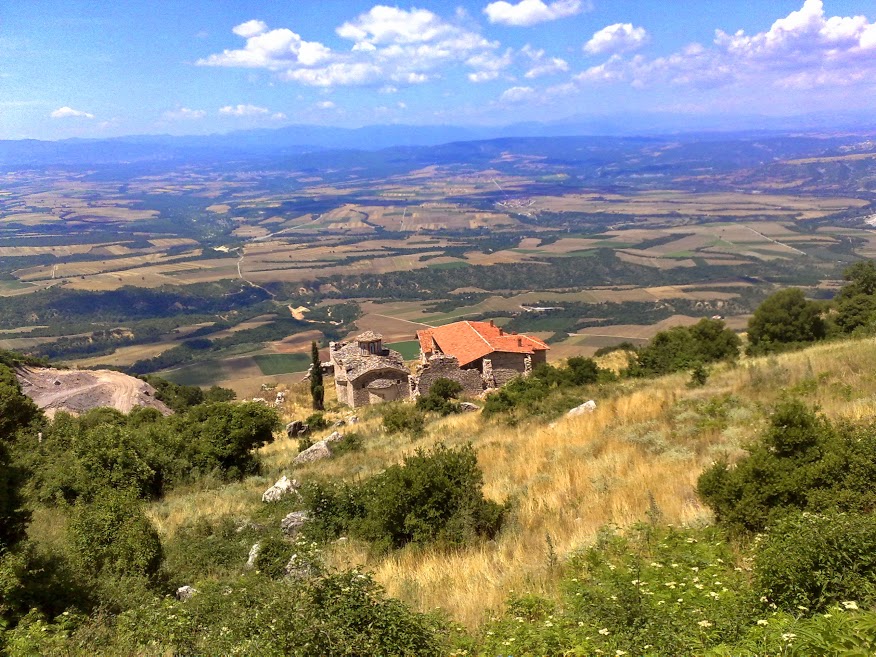
Paliouria is located near the river of Aliakmonas, at an altitude of about 480 meters and within the territorial boundaries of the village belongs the historic, Holy Monastery of Evangelistria, the so-called “Monastery of Bounasia” founded in 1148.
It was named Bounasia, because it is built near the highest peak of the Kamvouni mountains, Bounasia, or Vounassa at an altitude of 1000 meters, in a prominent position that looks like a natural throne.
This position gives you the feeling that you are on a plane, from where you can see Bourinos, Vasilitsa, the whole plain from Anthrakia to Paliouria (that is, the whole area of Flouria) but also Olympus.
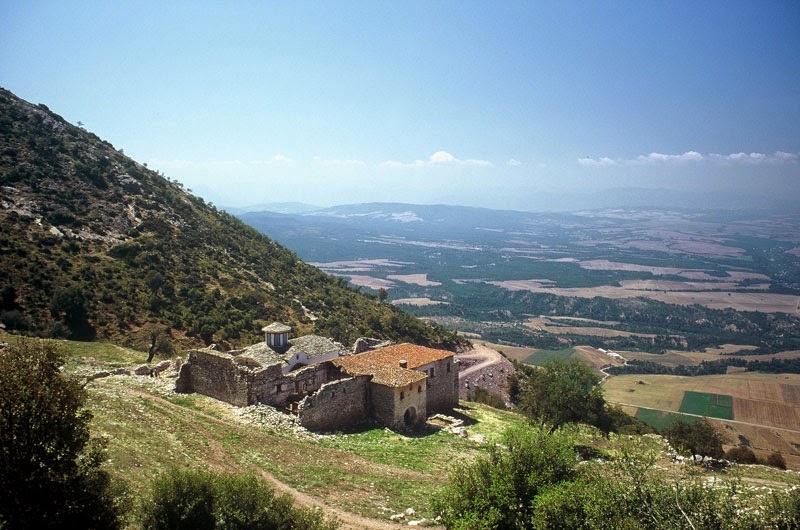
For the first time we meet the type “Panagia Bonasia” in the codex of the monk Galakti from Bunasi, which is kept today in the library of the Olympiotissa Monastery.
A manuscript of Barlaam Monastery also mentions the Monastery of Bunasa as a nunnery in the early 17th century, which, however, was converted into a monastery in the 18th century, while there are reports that the monastery of Bounasa even had a bookbinding workshop.
Several Holy Gospels of Monasteries and Churches of the area of Filouria were written and bound in the Holy Monastery of Evangelistria as evidenced by handwritten testimonies.
In 1763 the monastery became serious building construction
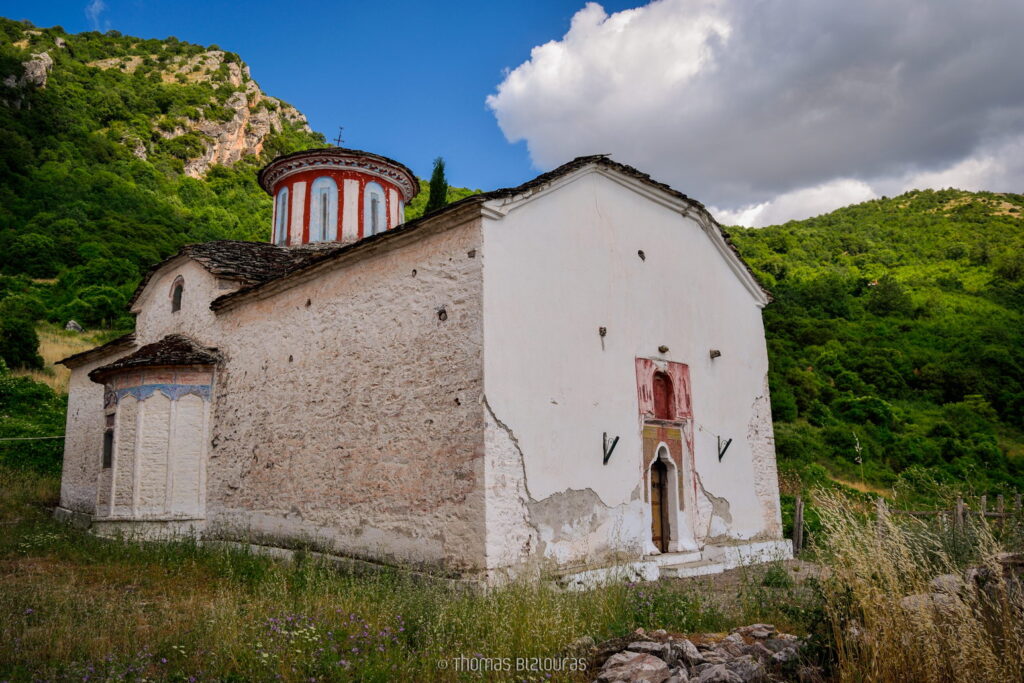
The seven monks, who were then in the monastery, Bartholomeos, who must be the abbot of this year, Christopher, Philotheos, Parthenios, Palatios, Makarios and Nikiforos, decided and built at their own expense, the kitchen the dining room as well as the cells with the toilet underneath while the builders were called Rista (Christos in Slavic), John and Costas.
This is, of course, a renovation of the auxiliary spaces of the monastery, which replaced the old buildings, without ruling out their incineration.
Twelve years later, on the fiftieth day of 1775, the inauguration of the new katholikon took place, as an inscription informs us, which is carved on the marble slab of the Holy Table.
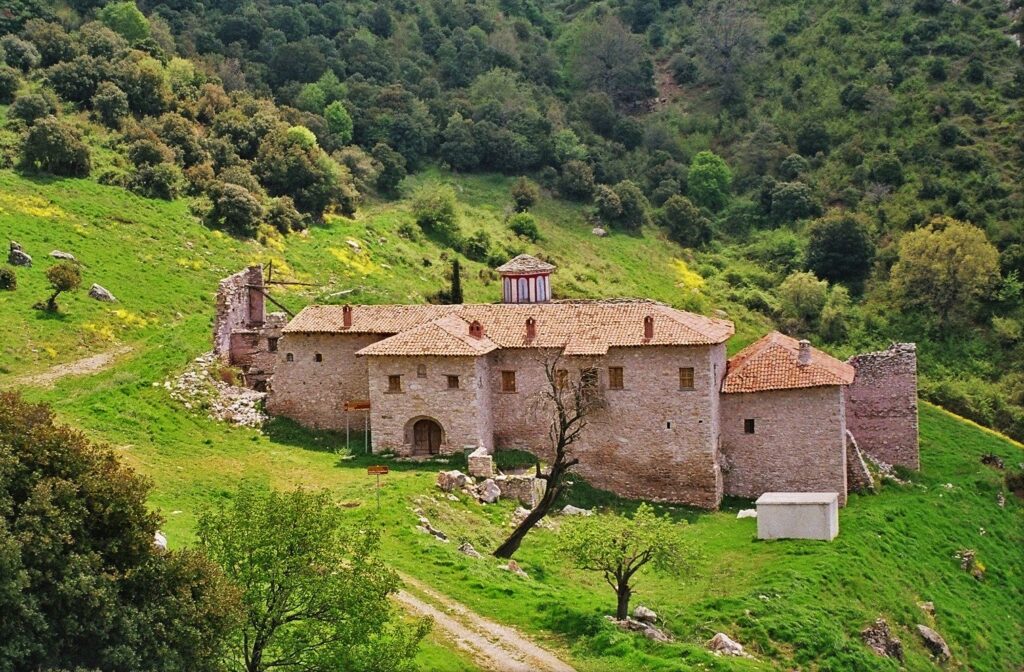
The fact that the reconstruction of the auxiliary monastic spaces preceded and not the reconstruction of the temple, leads us to two hypotheses: that in the period 1763 – 1775 there was no fire in the monastery and therefore the monks did not have an immediate problem for their functional needs or that if there was a fire in the monastery, after 1763 and before 1775, then only the katholikon and not the whole building complex was destroyed.
But if we are not sure about the reasons for the renovation of 1775, we have no doubt about the renovation of 1810 – 1817.
Thirty-five years later, the fire burned the catholic in 1810.


We conclude the year of the fire from the fact that this year a “frankness” was written, which talks about its renovation.
The access lesson for the access of the renovation was additionally assigned to the calculator and kaikakalo, Athanasios from Kleinovo of Kalambaka, during the application of a calligraphic “frankness”.
The “frankness” that exists was a promotion of the fundraiser that later unfolded, came out in vectors and mood like passages and applications that we use languages.
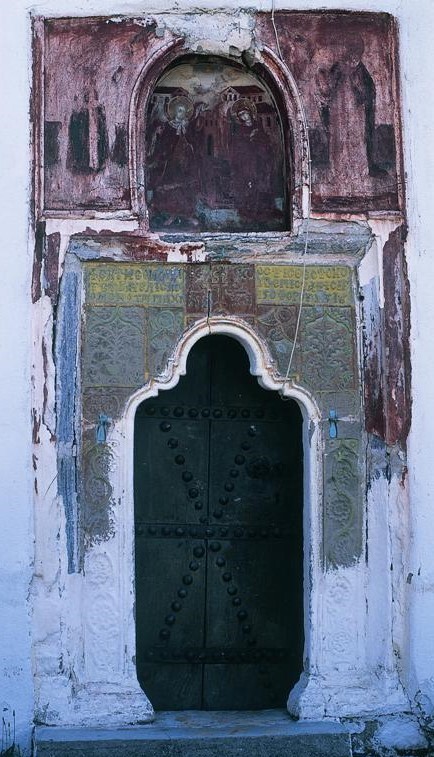
From May 1810, when the “frankness” was written, it took 6 years to complete the reconstruction of the katholikon, as the new founding inscription informs us, which is embossed in calligraphic letters but misspelled, on the entrance lintel.

In 1816, under the abbotship of Papachristoforos, a part of the Narthex was repaired or erected, as it is written on the inscription outside the south entrance to the church, while on the outside of the vestibule of the sanctuary is embossed the emblem of the Friendly Society and this proves that some monks and the Metropolitan of Stagon Paisios (1813 – 1819) “where the monastery belongs to the Metropolis of Stagon” were initiated into the Friendly Society for the liberation of the Nation.
The monastery functioned until about 1935 as a priory.
The last monks who inhabited it were Eugenios, who was blind, and Megaloschimos.
A blind servant, Pastos, also lived with them in the monastery.
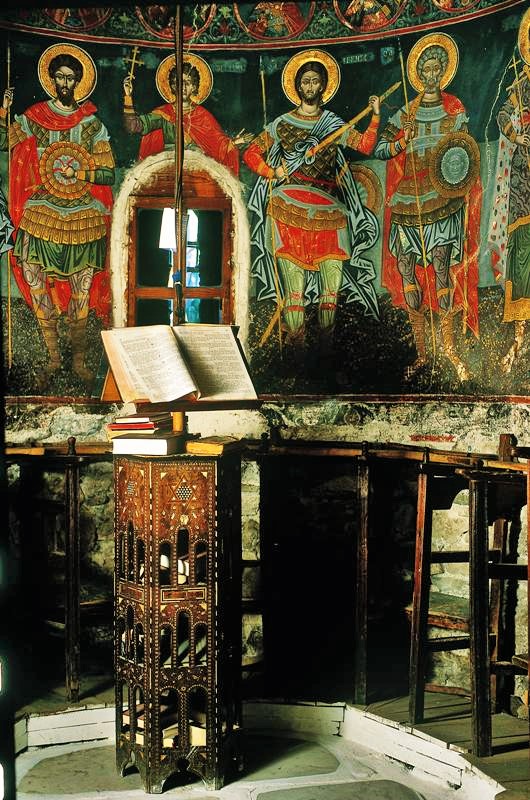

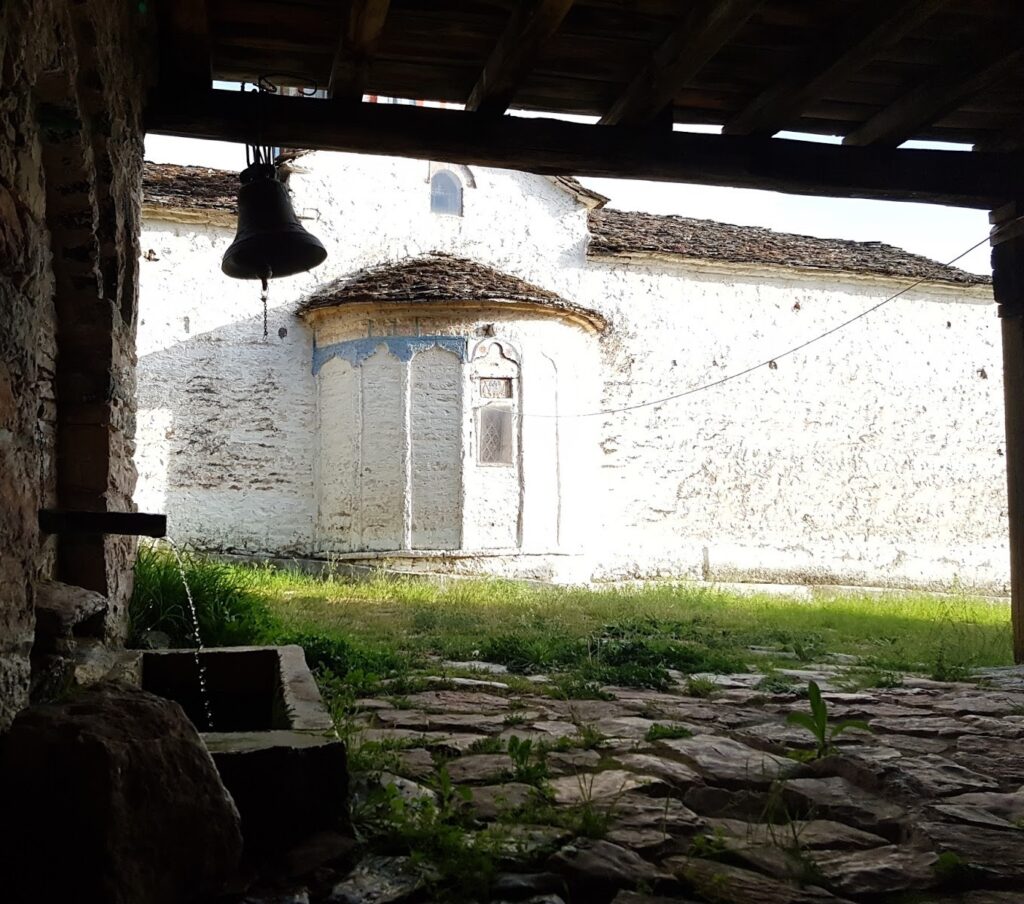

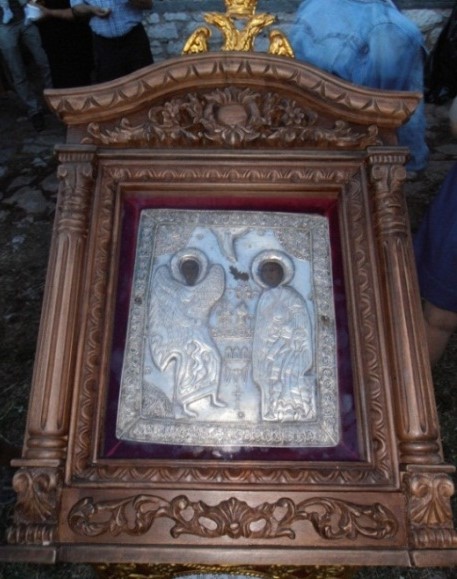

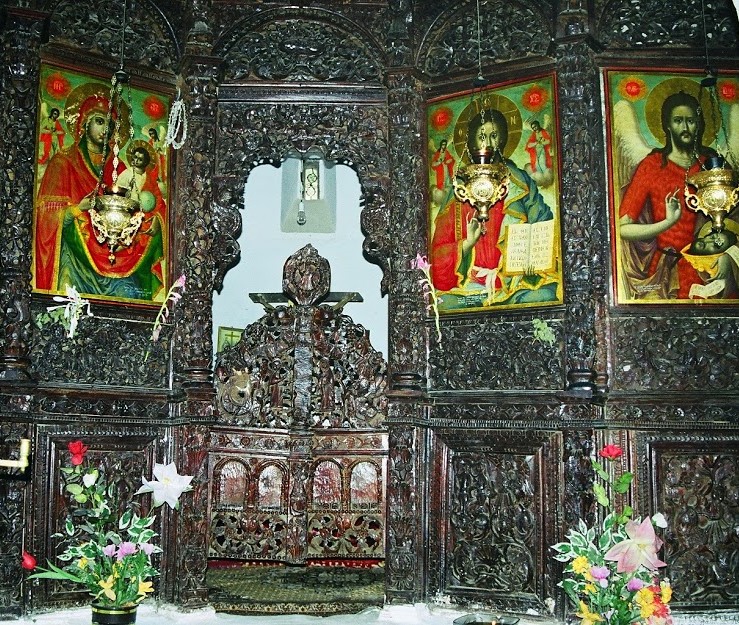




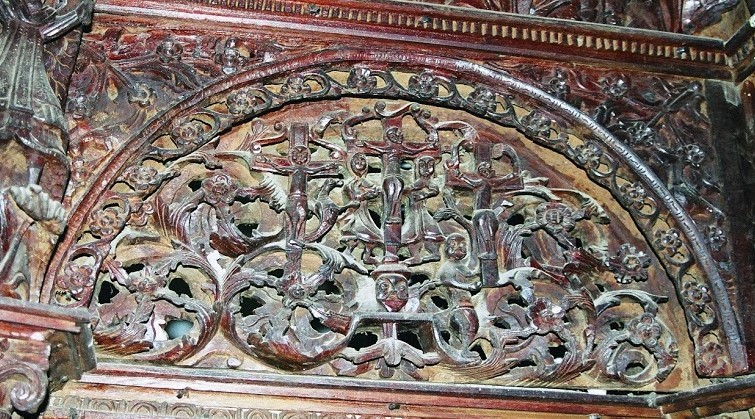
The last monk of the Monastery was Georgantas, who after leaving the Monastery functioned in the village of Paliouria as a village priest.
The monastery during the period of Ottoman rule has to show quite a lot of resistance, it was a place of thieves and boatmen, as well as a hospital for the captives.
Well-known Macedonian warriors, such as Pavlos Melas and Theodoros Ziakas, a well-known hero in the area of Grevena, had often sought refuge here, while it is noteworthy that a very important secret school operated in the monastery of Paliouria during the Turkish occupation.
Many children from the wider area and especially from Paliouria came here at night with great risk of their lives to learn Greek letters.
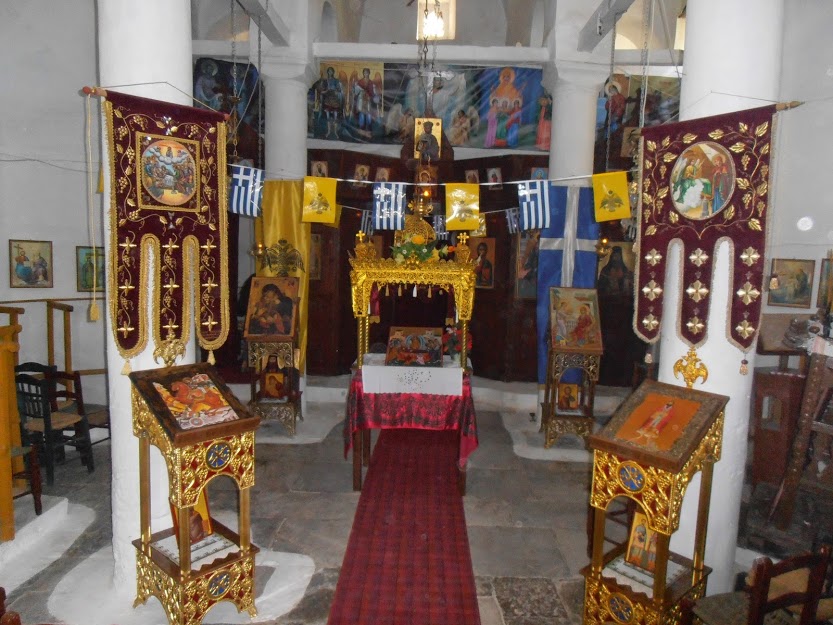
Evangelistria was from the time of its construction until its decline famous for its great wealth.
Very large areas of fields and vineyards belonged to the monastery, while the inhabitants of the area did not fail to contribute to the monastery fund with lambs and goats, or even part of their annual harvest.
The fields of the monastery were located mainly in the area of Karouti near Paliouria, but apart from fields, the monastery also had its own flocks of sheep, as well as its own stables.
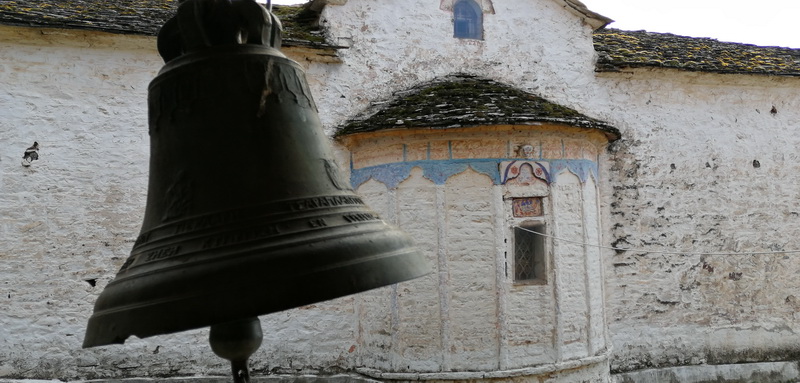
It also had beehives, which produced many kilos of honey each year, as well as cows, famous for their milk from which they made the most delicious cheese in the area and in fact it is said that the monastery had the best oxen in the whole surrounding area and which used for plowing which was then done with a wood mill.
Even the monastery of Evangelistria had in its possession many mules, only females, which were used at that time as the exclusive means of transport.
Of course, the crop of the monastery every year was very large and for this reason perhaps the monastery even had its own threshing floor in the area of ??Koutra, near Paliouria while as a mill the monastery used the mill of Skala, as well as the whole the surrounding area.

Personal testimonies that confirm the great amount of wealth of the monastery state, among other things, that money or other materials, food, etc. and other monasteries were often borrowed from the Holy Monastery of Evangelistria, both inside and outside the Prefecture of Grevena.
But the most important proof of this great wealth of the Monastery is that in its last years the monastery owned in addition to fields and about four hundred and five hundred sheep and goats, which grazed as it was done from the first moment, various employees – shepherds who paid them the monastery from its own fund, either in kind (wheat – cheese), or even with money (grosia).
The Monastery of Evangelistria celebrated twice a year and thus became for many days the focus of attention of all the inhabitants of Fyllouria and beyond.

The first celebration took place on March 25, when the name of the Monastery was celebrated, and the second was celebrated on the 15th of August, when the Virgin Mary, the patron saint of the Holy Monastery, was celebrated.
Each time the monastery was celebrated, it was visited by people from all over the area, who came there with mules or horses following the path and all this people the monks hosted in warm, spacious rooms with fireplaces and slept on a mattress.
To the guests the monastery offered honey and nuts, of its own production, and cool water from the stone fountain that existed inside the monastery.
In a special place, next to this fountain there was a cup of copper with a chain, with which every thirsty passer-by who asked for hospitality in the monastery to quench his thirst would rest.

The monastery was protected by the Virgin Mary who saved it from many disasters and bloodshed.
An example of this protection is the fact that although many rocks, huge in size, often flowed from the top of the mountain with a fork, everything stopped in a mysterious way just before they reached the outer wall of the monastery.
Another miracle, which the inhabitants of the village of Paliouria clearly remember until today, took place in 1944.
On February 9, 1944, the Germans completely burned the village and the inhabitants asked for protection in the monastery to protect themselves.
On February 10, the occupiers fired three missiles at the monastery from the Deskati crossroads, near the Lakko area, in order to kill those who were at the monastery at the time.

Indeed, one projectile landed in front of the temple entrance, the second pierced the dome and landed right in the center of the temple, and the third struck the bell tower, which is a few meters above the temple site.
Thanks to the Virgin Mary, however, none of the three missiles exploded and there were no human casualties and many locals believed that the “preference” that the Virgin showed in the monastery was due to the infinitely beautiful image of the Annunciation that it had.
This image is made of pure silver and depicted the Archangel while offering the lily to Mary.
This miraculous image was received in 1954 by the Diocese of Grevena and since then we did not know where it is.

The ancients did not know where this relic was located and everyone had their opinion: “a priest took it, put it in a bag and took it to the Diocese along with other images”, but what they all said was that the image is silver, measuring about 40 X 30 cm and in every difficult moment all the villages of Filouria asked for her help.
Finally, this miraculous image, together with other relics of the Monastery, is kept today in the sacristy of the Monastery of Zavorda, whose monks, every time the Evangelistria celebrates and not only, perform a service, bringing with them the miraculous image for worship.
All the buildings of the monastery were surrounded by a high and single wall, which was interrupted only by a heavy wooden door, which closed from the inside with a heavy iron latch (latch), fifteen centimeters thick.
Around the temple and as a continuation of the walls, all the other auxiliary spaces were built and on the second floor of the building were the cells and the art areas, while on the ground floor the kitchens, the reception areas as well as the spaces for the storage of food and drinks.

In the southern part of the wall was built a huge oven that was used to bake bread and next to it was the kitchen of the Monastery while just opposite the entrance of the Catholicos was built the dining room, but the second floor of this building is not preserved today, the secret school.
The entrance of the temple is in the shape of a low human body so that it is not possible for robbers or pagans to enter the temple with horses and desecrate it, while entering the prona there is a thick tree trunk firmly wedged in the ground from which a thick one started, heavy chain that ended in a kind of large handcuffs.
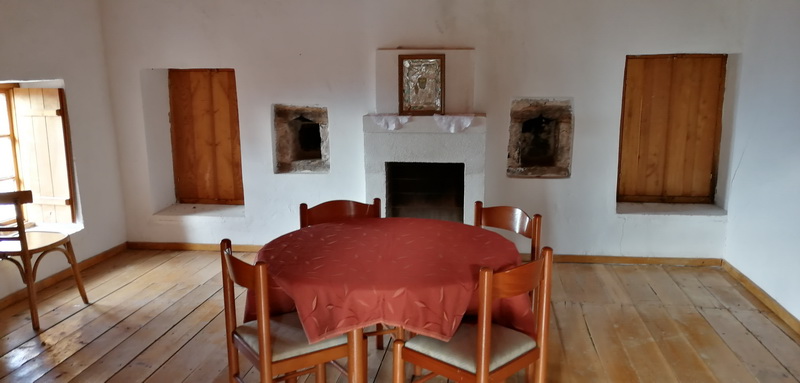
But only at night they tied the crazy monks (who brought them for treatment) from the neck for safety reasons, of course, in order not to hurt themselves, while many cases have been reported and recorded that some people with mental disorders were completely cured during their stay in the monastery and returned safely to their villages.
They also sent tuberculosis to the monastery for treatment, since the excellent, rich oxygen of the area, as well as their faith in God, healed the patients.
The iconostasis, which adorns the main part of the church is one of the most beautiful in Orthodoxy and unique in its kind.
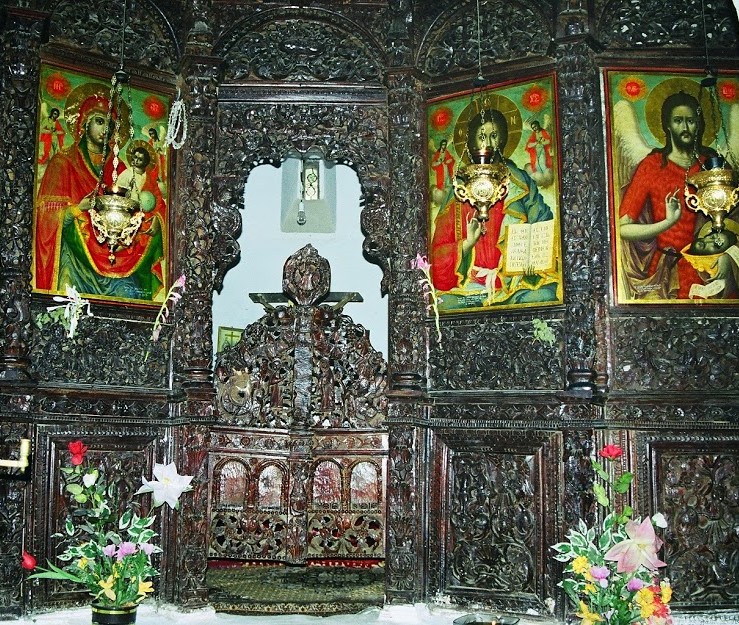
An inscription carved on the iconostasis, above the beautiful gate of the katholikon, refers to the abbot Christoforos, who contributed to the creation of the iconostasis in 1817.
Another gives us the oldest written testimony for construction works and craftsmen of Deskati, Ristas, Giannis and Kostas, who worked in 1763 in the Monastery while the tradition states, but also the locals claim that for its construction iconostasis of the Monastery, the craftsman worked non-stop for fourteen whole years.
On the eve of Vai in 2005, strangers stole almost the whole of it, leaving only the images, and a few parts of it.
They did not have time to take them either, because a Christian went up, holy days, to light the candles and saw the spectacle and notified the Authorities, but it was too late.
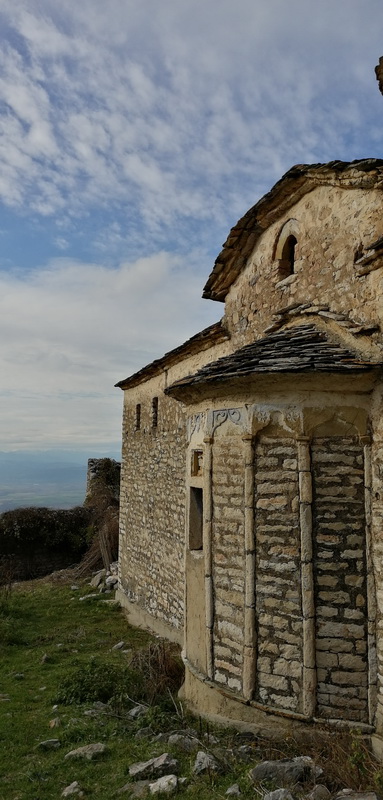
The iconostasis was decorated with plants dominated by the vine, scattered birds and themes from the Old and New Testaments while it was divided into five parts with colonnades and Theodosian capitals. Above them there were full body angels holding liturgical utensils and the pulpits were decorated with dragons, birds and bunches of grapes.
There was a representation of the Annunciation of the Virgin, as well as of the saints Demetrius and George on horseback and the prophets David and Solomon.
At the top was Christ in a prostration position with a crown and above the beautiful gate “dominated” the Virgin enthroned and holding a baby and was crowned by two angels and on both sides Saints George and Demetrius.
From the Old Testament he had the disobedience of Adam and Eve, the exit from paradise, the hospitality of Abraham, as well as the birth, the Crucifixion and the Resurrection of Christ.
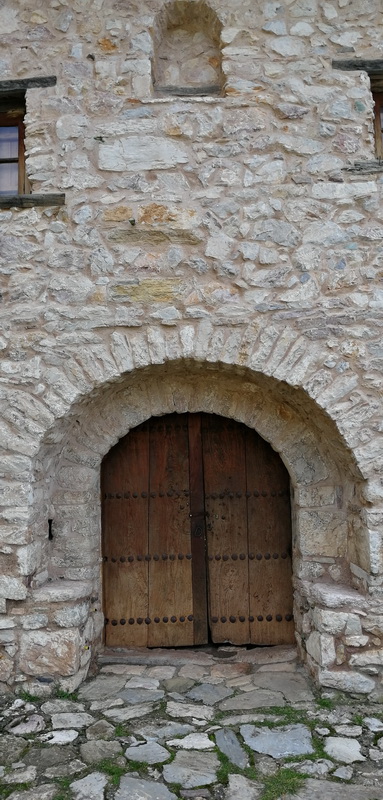
Today a temporary iconostasis was placed because with the image you saw you felt a tightness in the stomach and a knot in the neck.
Many believers, from the surrounding areas, often go up to the monastery to worship, but also to collect tea, tame, wild and linden while the vegetation throughout the area around the monastery is green and the space gives you a sense of peace and security.
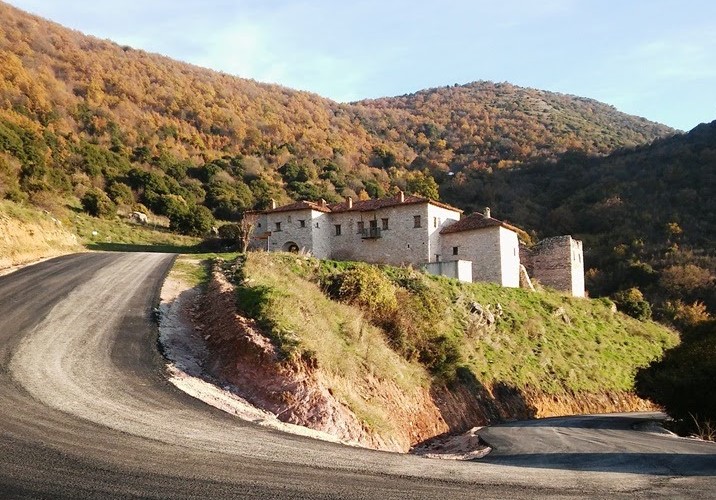
In recent years, an effort was made to restore the buildings around the church, while recently in February 2015 the electricity supply of the Monastery was approved, a necessary element for the future manning of the Monastery and its preservation road to the Monastery.

The Venetikos Bridge is a stone arch bridge that dates back to the Ottoman period.

Greece, Paradise on Earth Where you can live!

The Salem Mansion was designed in 1878.
You must be logged in to post a comment.
Γίνετε συνεργαζόμενη επιχείρηση του VIP Club του Hello Thessaloniki!
LUXURY CONCIERGE & PRIVATE TRAVEL SERVICES
G.N.T.O Licence Number (MHTE):
0933E70000833601
Ministry of Tourism
G.E.M.I. (Registration Number: 155899506000


